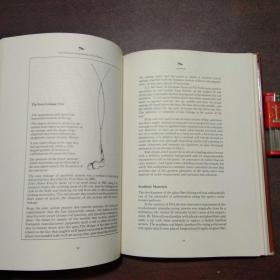Content:
Introduction:
The allure of the ocean's depths has always drawn anglers to the pursuit of its most elusive and delectable creatures. Among these, the flower crab, with its vibrant colors and succulent meat, is a prized catch for many. If you're eager to join the ranks of those who can boast of a successful flower crab fishing expedition, then this guide is for you. We delve into the art of catching flower crabs, offering you a treasure trove of techniques that will turn you into a seasoned pro.
Understanding Flower Crabs:
Before we dive into the fishing techniques, it's essential to understand the habits and preferences of flower crabs. Flower crabs are typically found in shallow waters, often near coral reefs and sea grass beds. They are nocturnal creatures, which means they are most active during the night. Their diet consists mainly of algae, but they are also known to feed on small invertebrates and decaying matter.
Choosing the Right Equipment:
The first step in mastering the art of catching flower crabs is to equip yourself with the right tools. Here's what you'll need:
- Reel and Rod: A sturdy spinning reel and a medium-heavy action rod are ideal for handling the resistance of flower crabs.
- Line: Use a monofilament line with a breaking strength of at least 20 pounds to ensure you can handle the fight.
- Hooks: Small to medium-sized circle hooks (sizes 4 to 6) are best for catching flower crabs.
- Bait: Fresh fish parts, such as shrimp or squid, are highly effective for attracting flower crabs.
- Leader: A leader of 30 to 40 inches in length with a 20-pound test will help you withstand the pull of the crabs.
Techniques for Catching Flower Crabs:
Timing is Key:
- As mentioned earlier, flower crabs are nocturnal. The best time to fish for them is at night or during twilight hours when they are most active.
- If you're fishing during the day, try to fish in areas where the water is deeper and darker, as these conditions mimic the natural habitat of the crabs.
Location, Location, Location:

- Focus your efforts on areas with abundant sea grass beds, coral reefs, or rocky outcrops. These locations are prime habitats for flower crabs.
- Use a fishfinder to locate schools of fish, as flower crabs often follow schools of fish to feed.
Baiting Techniques:
- Cut your bait into small pieces and thread them onto your hooks. Ensure that the bait is fresh and has a strong smell to attract the crabs.
- For added allure, you can use a piece of octopus or a small piece of fish liver as bait. These baits are particularly effective for attracting flower crabs.
Fishing Techniques:
- Cast your line into the water and allow it to sink to the desired depth. For flower crabs, this is typically around 10 to 20 feet.
- Once your bait has reached the bottom, start reeling in slowly. This mimicry of a natural feeding motion can trigger a bite from a curious flower crab.
- Be patient and keep a steady, slow retrieve. Flower crabs are cautious and may take a few moments to approach your bait.
Handling and Landing:
- Once you feel a tap on your line, set the hook firmly but gently. Flower crabs can be quite strong, so it's important to handle them with care.
- When you've successfully hooked a flower crab, maintain a steady pressure on the line to avoid letting it escape. Reel in slowly and carefully, as flower crabs can easily break free if they feel threatened.
Conservation Practices:
It's important to practice conservation when fishing for flower crabs. Be mindful of size and catch limits, and release any crabs that are too small or do not meet the legal size requirements.
Conclusion:
Catching flower crabs can be a challenging but highly rewarding experience. By understanding the habits of these elusive creatures and employing the right techniques, you'll be well on your way to becoming a proficient flower crab fisherman. Remember to respect the ocean and its inhabitants, and always practice sustainable fishing methods. With patience, persistence, and a bit of luck, you'll soon be reeling in your own catch of the day. Happy fishing!












